PPLE Module 2 Lecture + Readings
1/150
There's no tags or description
Looks like no tags are added yet.
Name | Mastery | Learn | Test | Matching | Spaced |
|---|
No study sessions yet.
151 Terms
Earmarks of a Profession
• Organized Literature
• Intellectual Character of Activities
• Superior Personnel
• Practical Nature
• Schools on the College and University Level
• Specialized Intellectual Technique
• Independent Judgement and Individual Responsibility
• Self Organization
• Social Regulation
• Research and Creative Work
• General Education
• The Individual
Characteristics of Self-Organization
• The first category of organization was attempts at self organization
• Guilds - was made to advance the profession and protect against incompetent practitioners
• Group cohesiveness - was build by guilds
• Organizations and associations
Characteristics of Social Regulation
• Voluntary associations vs Regulation by the State - both worked together usually
• Ethical Codes
• Protect the public from the quack, charlatan, and those who would prey on people in need of expert service
Sayadilah
• An early attempt at organization that led to the development of Western Pharmacy
→ Drug shops were inspected
→ Made a differentiation between pharmacy and medicine
• Pharmacists were examined and licensed by Muhtasib during the first half of the nineth century
• al-Biruni (973-1051) “pharmacy is the art of knowing the materia medica and compounding medications as prescribed.”
Edict of Frederick II
• Comprised of 3 essential regulations:
1. Separated the profession of pharmacy from the profession of medicine
2. Official supervision of pharmaceutical practice
3. Obligation by oath to prepare drugs reliably, according to skilled art, and in a uniform, suitable quality
• Applied to the Kingdom of the Two Sicilies
Historical Background of Inspection and Regulation
• Henry VI (1447) gave grocers power to examine “anise, wormseed, rhubarb, scammony, spikenard, senna...so not to hurt bodily health in the buying of these products.”
• Later decrees gave supervision of pharmacy to the medical profession. (1540, 1553)
• Society of Apothecaries (1617) “empowered to inspect any pharmacy and burn before the offender’s door all drugs and preparations deemed corrupt or unwholesome.
Society of Apothecaries
1617
• Empowered to inspect any pharmacy and burn before the offender's door all drugs and preparations deemed corrupt or unwholesome
Historical Background Regulation in America
• Don Alexandre O’Reilly, governor of Louisiana issued an edict in 1770 that helped differentiate the areas of medicine, pharmacy, and surgery.
• This is perhaps the first legal definition of pharmacy in North America as a separate branch of medicine
• This territory in Louisiana was controlled by Spain during this time
• Jean Peyroux in 1769 was the first pharmacist known to have been examined and licensed within the territorial limits of the United States.
First pharmacist known to have been examined and licensed within the territorial limits of the United States
Jean Peyroux (1769)
Drug Importation Act of 1848
• Importation of spurious and adulterated products was a problem.
• Complaints about imported drug products from Europe were increasing
• New York College of Pharmacy and New York Academy of Medicine were leaders in the fight for this legislation.
• Dr. M.J. Bailey, examiner of the New York port, described the problems:
“Peruvian Bark was so adulterated that the dose had to be increased to a teaspoonful, rather than the normal few grains. Opium received was one third the standard morphine level.”
Model Law 1900 - James Beal
• Pharmacist and lawyer who wrote an updated version of Model Law.
• His version was adopted by APhA and helped define the difference between a pharmacist and a mere merchant.
• Established a professional pharmacy as a distinct entity, existing for the public good.
Harvey Wiley
• Key figure for enacting a national food and drug statute.
→ Before this, regulations were left to the states, but they were limited since they were broke
• Crusader and as well as a well-informed scientist
• Helped to bring together the forces to put pressure on Congress to enact legislation.
• Journalistic “mudrakers” wrote exposes on the shocking conditions in food processing and the dangerous ingredients and fraudulent advertising of drugs
Mudrakers
• Journalists wrote colorful exposes about food processing in such magazines as Collier’s and Ladies Home Journal.
• Upton Sinclair’s, The Jungle.
• Samuel Hopkins Adams’, The Great American Fraud
Federal Pure Food and Drug Act of 1906
• Prohibited the adulteration and misbranding ofDrugs (as well as foods) in interstate commerce (between states).
• Could exact penalties for certain types of misbranding and adulteration, and prevented false statements for the strength, quality, and purity of the drug.
• 1912 Congress amended the Pure Food and Drug Act to prohibit false and fraudulent efficacy claims. (Supreme Court decision; U.S. vs.Johnson)
• USP and NF were made the official standards for the definition of ‘adulteration’ of a drug
• This amendment was difficult to enforce, since it required the government to prove fraudulent intent on the part of the one who made false claims, such as a drug could cure cancer. The Pure Food and Drug Act failed to achieve its purpose.
Elixir Sulfanilamide
• September-October 1937 over 100 deaths were attributed to Elixir of Sulfanilamide, a new liquid formulation manufactured by the S.E.Massengill Co.
• This tragedy helped to point out the inadequacies of the Pure, Food, and Drug Act.
• This formulation contained “diethylene glycol” otherwise known as antifreeze.
• Tested for flavor, appearance, and fragrance but NOT for safety (led to the FDC Act)
• Labeled as an “elixir” vs. a “solution”, but did NOT contain alcohol -Considered misbranding
→ They were only able to prosecute based on a technicality
Food, Drug, and Cosmetic Act of 1938
• No new drug could be marketed until is was proven safe to be used under the conditions described on the label and approved by the FDA
• Drugs marketed prior to 1938 are exempt
• KEY POINT: Applies to interstate commerce and transactions b/w pharmacists and patients
• The law expanded the definitions of misbranding and adulteration used in the earlier act. Required that labels must contain adequate directions for use and warnings about the habit-forming properties of certain drugs.
FDCA Expanded the definitions of Adulteration and Misbranding: Adulteration
• A drug is considered adulterated
→ If its strength, quality, or purity differ from the label.
→ If its strength, quality, or purity differ from compendia standards (USP-NF), unless clearly stated on the label
• Adulteration provisions focus on both the facility and the product. (i.e., how is the product prepared, packed, stored, is it contaminated?)
• Think INSIDE the Container
FDCA Expanded the definitions of Adulteration and Misbranding: Misbranding
• Misbranding focuses on representations made by the manufacturer on the label or labeling
• Labeling cannot be false or misleading
• Labeling must include a list of active and inactive ingredients
• Label must contain adequate directions for use
• Misbranding provisions can also apply to pharmacists
• Think OUTSIDE the Container
Durham Humphrey Amendment 1951
• Established two classes of drug: Rx and OTC
• Provided that labels of Rx drugs do not require adequate directions for use, if they contain the legend:
"Caution: federal law prohibits dispensing without a prescription" OR "Rx only"
• If dispensed by a pharmacist, directions from prescriber on the label satisfies “adequate directions for use requirement.”
• Authorized oral rxs
• Authorized rx refills
• Prescription drugs are subject to new drug application (NDA) approval process
Food Additives Amendment of 1958
• Components added to food products must receive premarket approval for safety (unless generally recognized as safe GRAS)
• Delaney Clause prohibited approval of any food additive that might cause cancer
Delaney Clause
Prohibits adding cancer causing agents to food
Color Additive Amendments of 1960
• Required manufacturers to establish the safety of color additives in food, drugs, and cosmetics
• The FDA can approve a color for one specific use (e.g. external use)
• Delaney Clause also applies here
Kefauver-Harris Amendment of 1962
• Requires drugs to be proved safe AND effective
• Applies to drugs from 1938 and on
• More extensive controls for clinical investigations including; informed consent of research subjects and reporting of adverse drug reactions.
• Established Good Manufacturing Practices (GMP) requirements.
• Jurisdiction of Prescription drug advertising was transferred to the FDA from the Federal Trade Commission
Good Manufacturing Practices
• Are a set of regulations that establish the minimum requirements for the methods, facilities, or controls used in the manufacture, processing, packaging, or holding of a drug product
• Established by the Kefauver-Harris Amendment of 1962
Medical Device Amendments of 1976
• Required premarket approval for the safety and efficacy of medical devices
• Established performance standards
• Manufacturers need to conform to GMP regulations and record and reporting requirements
• Was established due to Public safety concerns like the Dalkon Shield
Orphan Drug Act of 1983
• Provides incentives to promote research, approval, and marketing of drugs needed for the treatment of rare diseases (fewer than 200K affected)
Drug Price Competition and Patent Term Restoration Act of 1984
• Streamlined the generic drug approval process for
• Provided patent extension in some cases to innovator drugs
• Intent was to make generic drugs more readily available to the public and to provide incentives for manufacturers to develop new drugs
Prescription Drug Marketing Act of 1987
• Establishes sales restrictions and recordkeeping requirements for prescription drug samples
→ Previously unregulated
• Requires state licensing of drug wholesalers
• Prohibits hospitals and other healthcare entities from reselling their pharmaceutical purchases to other businesses
→ This law was the result of intense lobbying and negotiating between the generic drug manufacturers and the manufactures of innovator drugs
Safe Medical Devices Acts of 1990
• Gave the FDA additional authority related to post-marketing requirements and pre-market notification and approval of medical devices while *expediting the market device approval process*
• Device tracking for maintaining traceability of certain devices to user level
• This legislation helped to strengthen the Medical Device Act (MDA) of 1976
The Generic Drug Enforcement Act of 1992
• Authorized FDA to ban individuals or firms from participating in the drug approval process if convicted of related felonies
• It also imposed severe civil penalties for false statements, bribes, failures to disclose material facts, and other offenses
• The FDA staff who accepted the bribes were convicted. Congress passed this law to ban individuals or firms from participating in the drug-approval process if convicted of related felonies
Prescription Drug User Fee Act of 1992
• Required manufacturers seeking NDAs to pay fees to shoulder part of the costs for reviewing new drugs in the FDA
• Act must be reauthorized every 5 years
• Newer technologies and increased amounts of research caused the FDA to be inundated and overwhelmed with an ever-increasing number of drugs for approval
→ And Congress had refused to expand its budget
Nutrition Labeling and Education Act of 1990
• Mandates nutrition labeling and health claims on food products and authorizes health claims on product labeling, so long as the claims are made in compliance with FDA regulations
Dietary Supplement Health and Education Act of 1994 (DSHEA)
• Defined dietary supplements
• Permitted manufacturers (of dietary supplements) to make certain claims that otherwise would have been illegal under the FDCA
• Forced FDA to regulate dietary supplements more as foods than as drugs
** Seemed to be better for manufacturers than for people **
Food and Drug Administration Modernization Act of 1997
FDAMA
• Created a fast-track approval process for drugs intended for serious or life-threatening disease
• Establishes a data bank on clinical trials, authorizes scientific panels to review clinical investigations (that can be accessed bypatients), and expands the rights of manufacturers to disseminate unlabeled use information
• Intended to eliminate backlogs in the approval process and to ensure the timely review of applications
• It reauthorized the Prescription Drug User Fee Act of 1992 for 5 more years
Medical Device User Fee and Modernization Act of 2002
• Similar to Prescription Drug User Fee Act, established user fee requirements for premarket reviews of medical devices.
• Established performance goals for premarket reviews
• Inspections can be conducted at establishments by accredited third parties
Food and Drug Administration Amendments Act of 2007
• Provides the FDA with new funding and significantly more authority over drug safety.
• Enhanced responsibilities and authorization to regulate drug safety, including the:
→ Authority to mandate labeling changes related to safety
→ Require clinical trial data reporting and registries
→ Post-market clinical studies to assess risk
• Required clinical trial data reporting and registries
• Require companies to implement "risk evaluation and mitigation strategies"(REMS) to ensure that the benefits of a drug or biological product outweigh the risks
Patient Protection and Affordable Care Act of 2010
• Provided sweeping changes throughout the entire healthcare system
• Added healthcare law beyond the scope of the FDCA
• Directly and indirectly affected other laws related to pharmacy practice
FDA Safety and Innovation Act of 2012
• Reauthorized the Prescription Drug User Fee Act
• Added new fees for generics or biosimilars
• Provisions were added to reduce drug counterfeiting, blocking the import of adulterated products, detecting and reducing drug shortages, and enhancing the exchange of prescription drug diversion information across state lines.
• Allows the FDA to inspect foreign drug manufacturers, target problematic sites
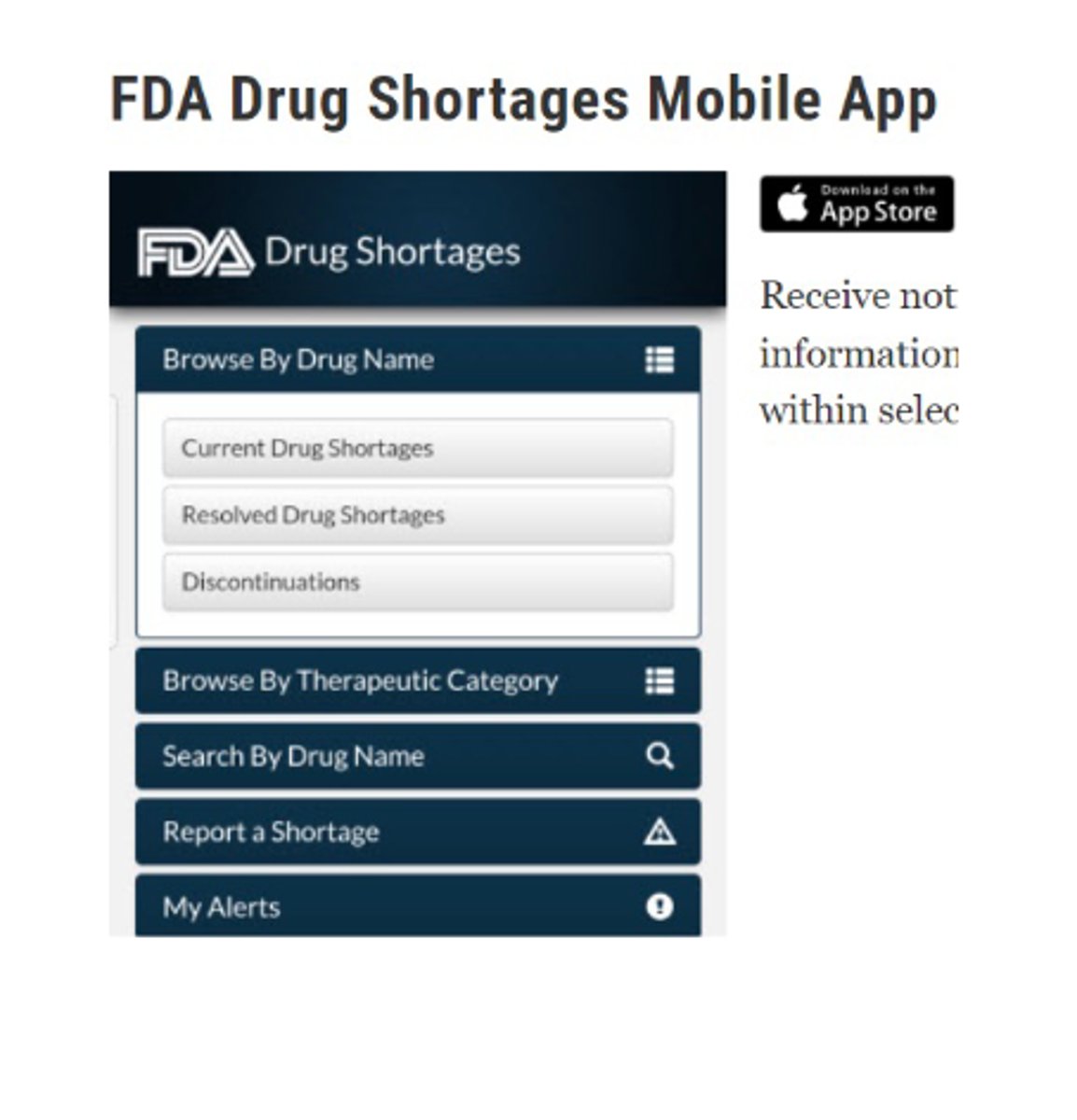
Drug Quality and Security Act of 2013
• Clarified oversight over pharmacies engaged in large-scale compounding and shipping of sterile products to other licensed entities (outsourcing facilities)
• Passes in response to meningitis outbreak that killed over 60 people and injured hundreds thanks to contaminated drugs from a compounding pharmacy in New England
• Outsourcing facilities may voluntarily register with FDA and MUST comply with Current Good Manufacturing Practices.
• It also adds "track-and-trace requirements" for all entities in the chain of distribution of pharmaceutical products
→ So that recalls can be more efficient
• Manufacturers must provide transaction information to purchasers and in turn must provide transaction information to subsequent purchasers such as wholesalers and pharmacies.
• Also mandates electronic interoperable product tracing system by 2023
21st Century Cures Act 2016
• Streamline and accelerate the drug development and approval process by creating new clinical trial design options
• Accelerate the pathways to market for drugs intended to treat certain serious or life-threatening diseases.
• Increased funding for mental health and substance abuse issues
• Cures Act authorized $500 million over 9 years to cover the cost of implementing the law, Billions of $$$ of additional funding to NIH
FDA Reauthorization Act of 2017 (FDARA)
• Amends FDCA to revise and extend the user-fee programs for prescription drugs, medical devices, generic drugs, and biosimilar biological products, and for other purposes
• Created a category of OTC hearing aids
Food and Drug Omnibus Reform Act
Passed in December of 2022 to encourage clinical trial diversity, provide reforms to the FDA accelerated approval process
Why do we need Federal Drug Regulation?
• Protect the public against adulterated and misbranded drug products
• Balance of "direct regulation" and "indirect regulation"
→ FDA Rulemaking authority from Section 707 of FDCA (‘Direct’)
→ Issue Guidance Documents (‘Indirect’)
• Primary goal of the Pure Food and Drug Act of 1906and the succeeding drug-related legislation was the protection of public welfare
Which agency houses the FDA?
• Department of Health and Human Services (DHHS)
• Authority for administering the FDCA (US Code 21 U.S.C. 301.) is vested in the Secretary of DHHS. The President appoints a commissioner of the FDA who is accountable to the Secretary of DHHS,
The FDA has _____ headquarter offices and ______ center level organizations.
13; 9
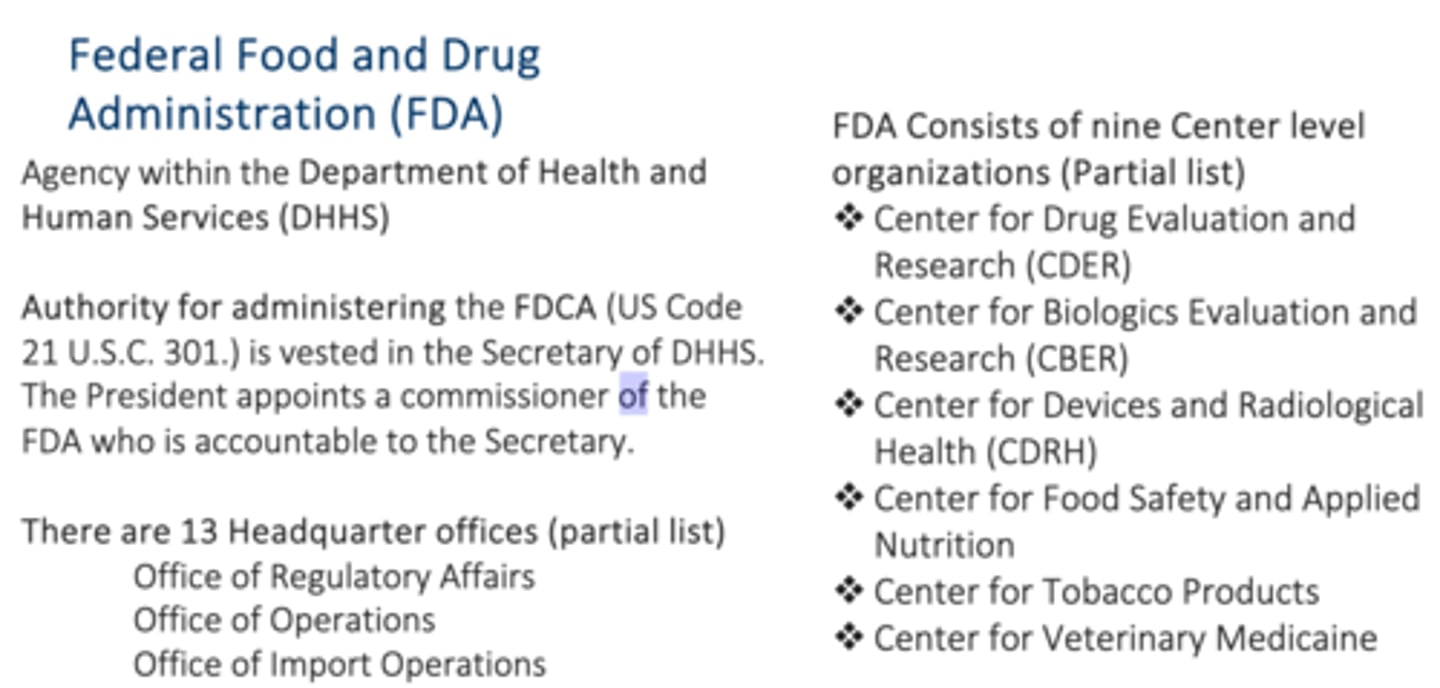
Function of the FDA
• Rulemaking or regulations Title 21 of the Code of Federal Regulations (CFR)
→ "Notice and Consent Rulemaking"
• Issue guidance document (but they do not have the force of law)
• Incorporates advice from standing advisory committees of outside experts
What does the FDA regulate?
• Foods; including dietary supplements, bottled water, food additives, infant formulas, other food products
• Drugs; prescription drugs (brand name and generic), non-prescription (over-the-counter) drugs
• Biologics; vaccines, cellular and gene therapy, blood products, etc.
• Medical Devices; simple, complex (pacemakers),dental, surgical implants and prosthetics
• Cosmetics; skin care products, color additives
• Other; veterinary, tobacco, electronic products, oncology, color additives, animal drugs, and food additives for use in good for animals
"Food"
1) Articles used for food or drink for man or other animals,
(2) Chewing gum,
(3) Articles used for components of any such article
"Device"
An instrument, apparatus, implement, machine, contrivance, implant, in vitro reagent, or similar or related article, including any component, part or accessory
"Cosmetic"
(1) Articles intended to be rubbed, poured, sprinkled, or sprayed on, introduced into or otherwise applied to the human body or any part thereof for cleansing, beautifying, promoting attractiveness, or altering the appearance,
(2) Articles intended for use as a component of any such articles, shall not include soap
What is a Drug?
• Articles recognized in USP or homeopathic pharmocopeia
• Articles intended to diagnose, cure, mitigate, treat, or prevent disease
• Articles (other than food) intended to affect the structure or function of the body
• Establishing that an article is a drug, as opposed to a food, dietary supplement, or cosmetic, provides the FDA with considerably more authority over the article
How is a device different from a drug?
A device does not achieve its principle purpose through chemical action and is not dependent on being metabolized to achieve its principle purpose
Some devices are ______________________ that also contain drug for example;
- Drug-eluting stents (DES),IUD
- Mirena releases levonorgestrel
- Implantable infusion pump-insulin
combination products
Rx vs. OTC; Two classes of drugs
• Durham-Humphrey Amendment of 1951 established Prescription and Over-the-counter drugs
• Two things in order to change the status of a drug from OTC to prescription (U.S. vs Decholin)
1. The toxicity and method of use require physician supervision
2. “Collateral” measures for use require physician supervision.
• FDA has authority to categorize Rx drugs; unsafe for use except under the supervision of a practitioner due to toxicity, method of use, or collateral measures necessary to use the drug.
• Rx Drugs are subject to the new drug application (NDA) approval process
Two things in order to change the status of a drug from OTC to prescription
1. The toxicity and method of use require physician supervision
2. "Collateral" measures for use require physician supervision.
Evidence that a product is a drug
• Labeling
→ Did the supplier make a therapeutic or health claim or structure/function claim?
→ Just because a manufacturer says something isn't a drug, doesn't mean anything since the FDA can recognize as one
→ The manufacturers intended us of a product is the most important compared to the purchaser's intent
• Advertising
→ What are the claims on advertising, the internet, promotional materials
• Nature of the product or Consumer perception, which may be established through the product's reputation
Is a recall voluntary or mandatory?
Voluntary, and is taken by the company to remove a detective drug product from the market
How is food different from a drug?
• Depends on the intended use
• Something is a food if it is used for its ordinary purpose and in an ordinary manner (people use food for taste, aroma, or nutritive value)
• Foods are excluded in the part C. definition o fa drug-because all foods affect the structure or function of the body
What are the two special categories of food created by the FDA?
1. Special dietary food
2. Medical foods
Special Dietary Foods
• Includes but are not limited to foods that supply a special dietary need that exists by reason of a physical, physiological, pathological, or other condition such as the condition of disease, convalescence (recovery), pregnancy, lactation, infancy, allergic hypersensitivity to food, underweight, overweight, or the need to control the intake of sodium
• Examples: infant formulas, artificial sweeteners, caloric supplements
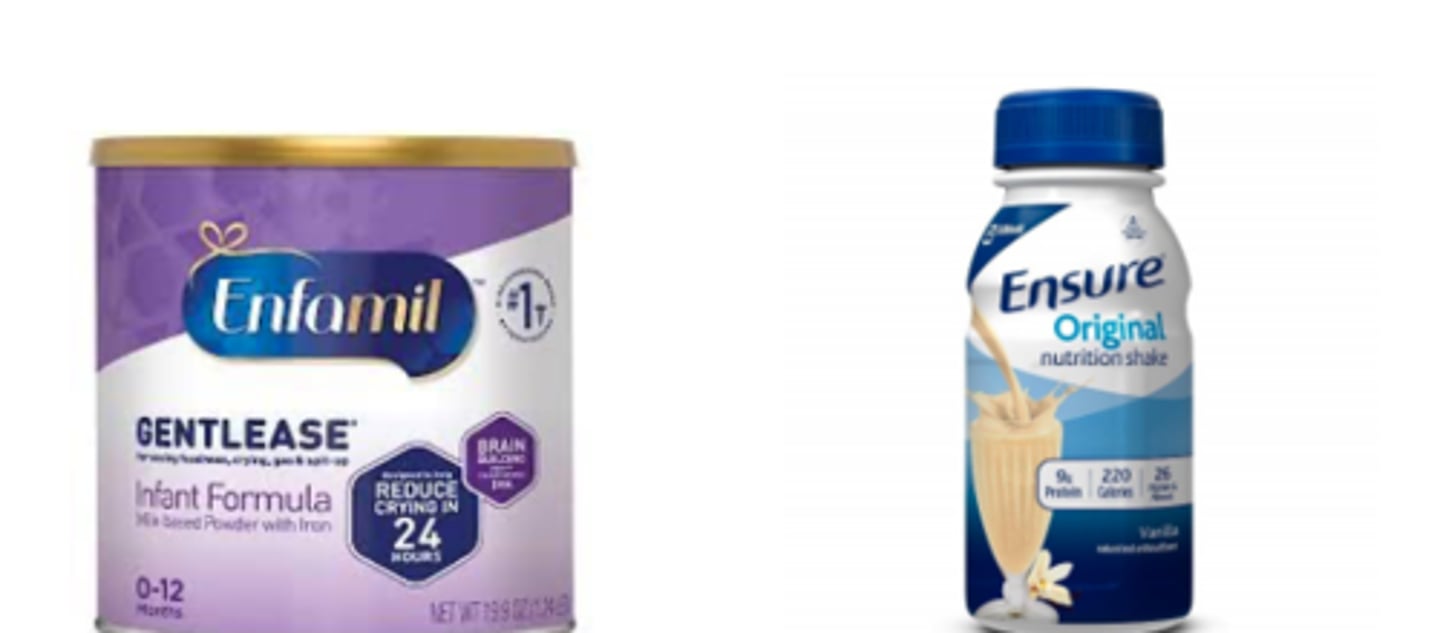
Medical Foods
• Medical foods include foods formulated for oral or enteral use under the supervision of a physician and that are intended for the specific dietary management of a disease or condition for which distinctive nutritional requirements are established by medical evaluation.
• Examples; foods formulated without the amino acid phenylalanine for people with phenylketonuria
• Medical Foods must be specially formulated, NOT naturally occurring, and must provide nutritional requirements that would be impossible for the patient to meet through a normal diet
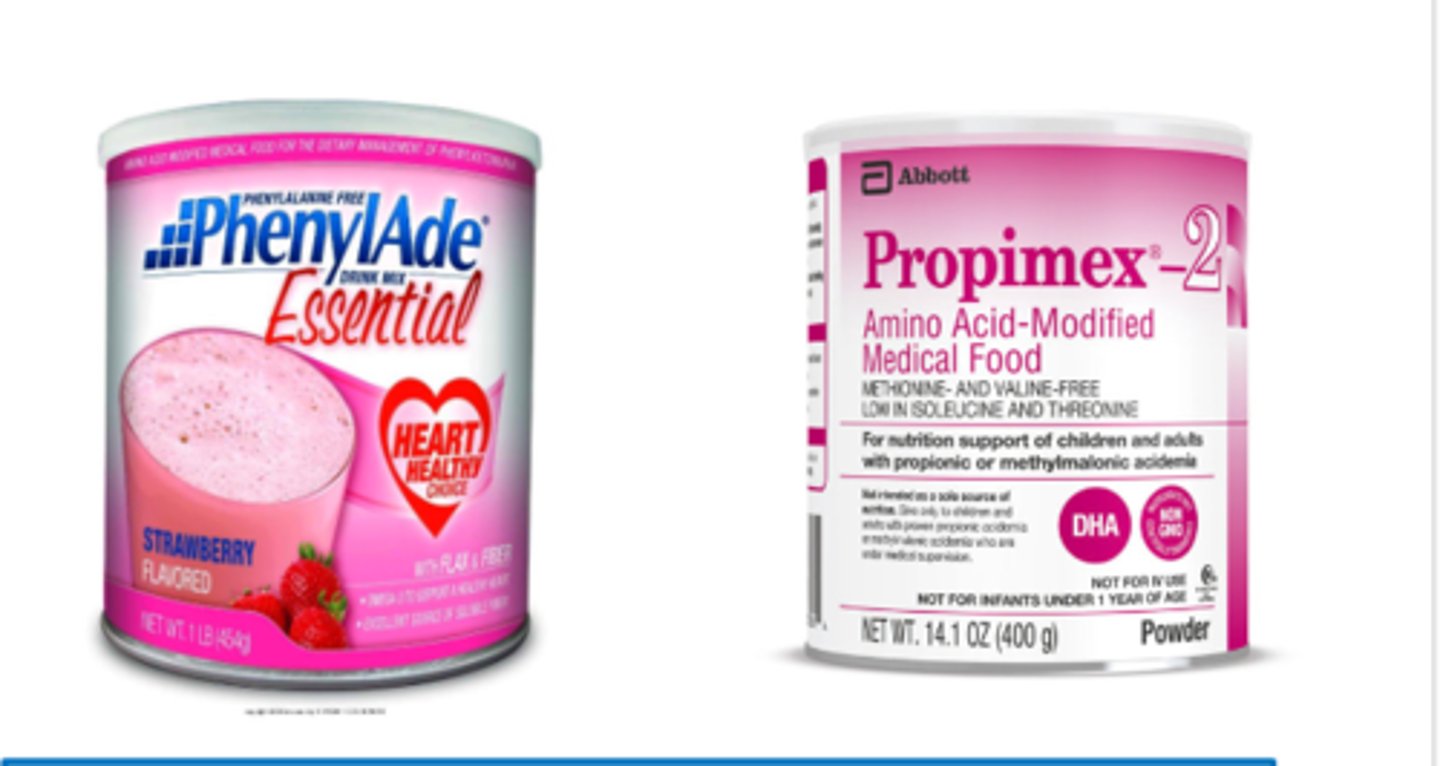
The FDA does NOT approve...
• Medical Foods
• Infant formulas
• Dietary supplements
• Food label or nutritional facts panel
• Structure-function claims on dietary supplements
"Nutriceuticals" and "Functional" Foods
• "Nutraceuticals" and "functional" foods are VAGUE definitions that are NOT specifically defined by law
• "Functional foods" are foods or nutraceuticals that have been fortified or enhanced with dietary supplements
- OJ with Vit D, foods with probiotics
• Many products that might be considered nutraceuticals or functional foods are regulated as dietary supplements (to be discussed later)
Functional Foods
Are foods or nutraceuticals that have been fortified or enhanced with dietary supplements
- OJ with Vit D, foods with probiotics
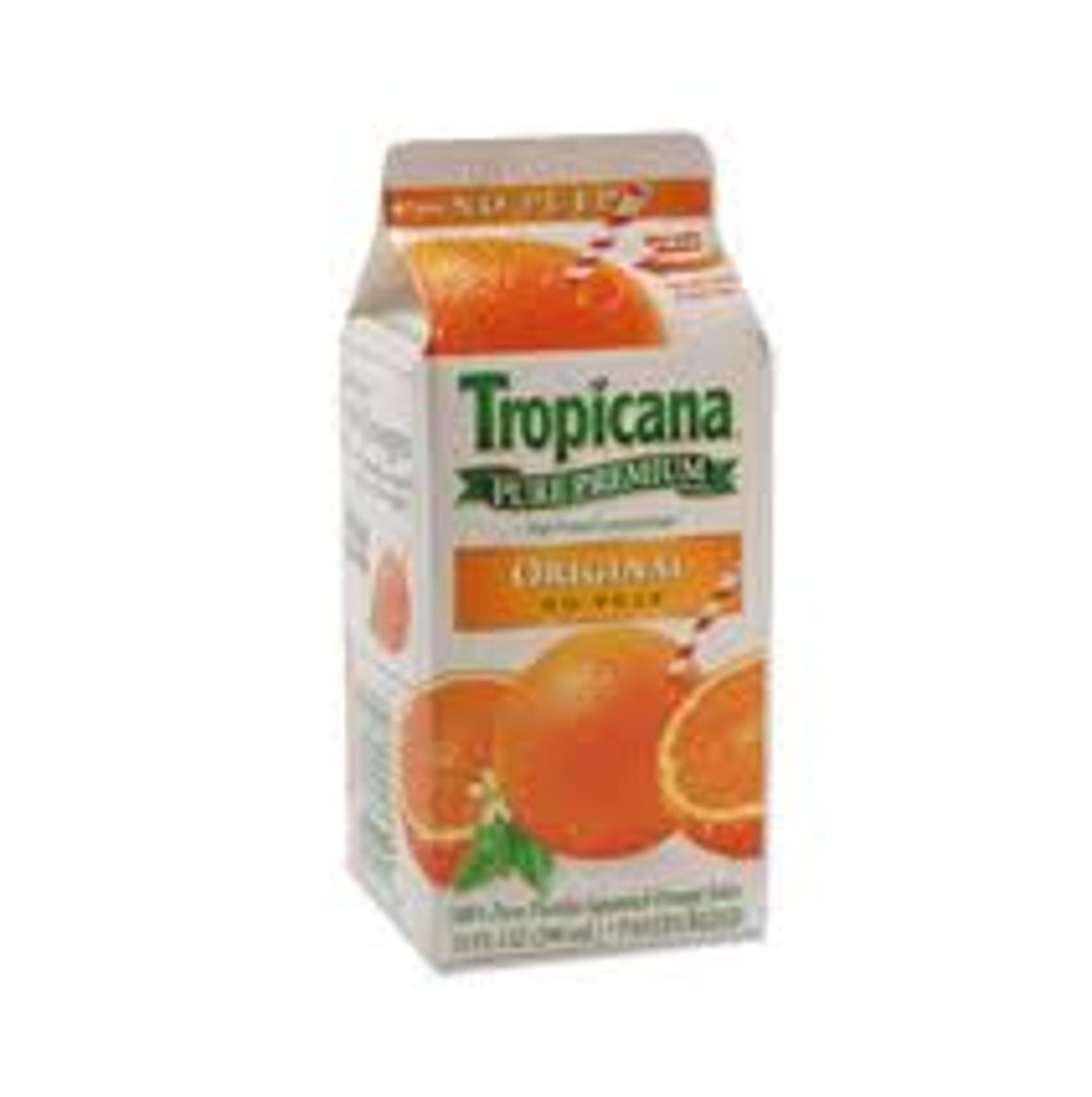
Nutraceuticals
• A food containing health-giving additives and having medicinal benefit.
• May be regulated as dietary supplements
Dietary Supplement
• A vitamin, mineral, herb, or other botanical; amino acid, or substance used to supplement the diet by increasing total dietary intake
• FDA must prove that a dietary supplement product is unsafe before it can remove the product from the market
Nutritional Support (Structure/ Function Claims) Statements that are allowed under DSHEA:
1. Product will benefit a classical nutrient deficiency disease (if discloses prevalence in the U.S.)
2. Role of the dietary supplement to affect the structure/function of the body
3. Characterizing the mechanism by which a dietary supplement acts to maintain the structure or function
4. Statements of general well-being from consumption of a nutrient or dietary ingredient
• Disclosure: "These statements have not been evaluated bythe Food and Drug Administration. This product is not intended to diagnose, treat, cure, or prevent any disease."
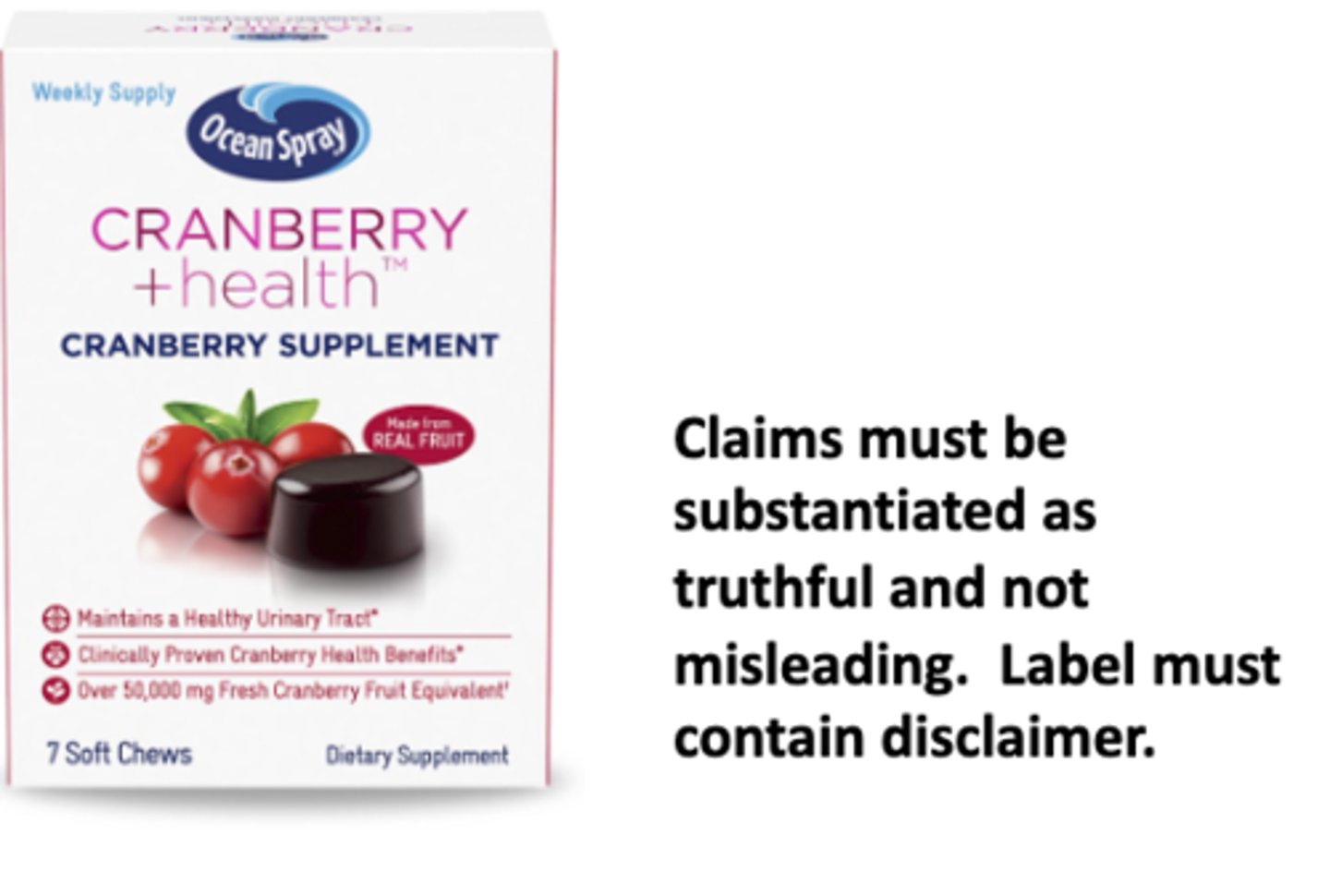
When are dietary supplement permitted to make health claims?
• When the FDA has approved the claim
• If it passes the "significant scientific agreement" test
→ If it meets SSA, the drug is unqualified health claims an does not need that disclosure
→ If it does not meet SSA, it is considered qualified and it needs a disclaimer
• Pearson v. Shalala, held that dietary supplement manufacturers could make health claims not approved by the FDA, provided that they are not false or misleading and accompanied by a disclaimer
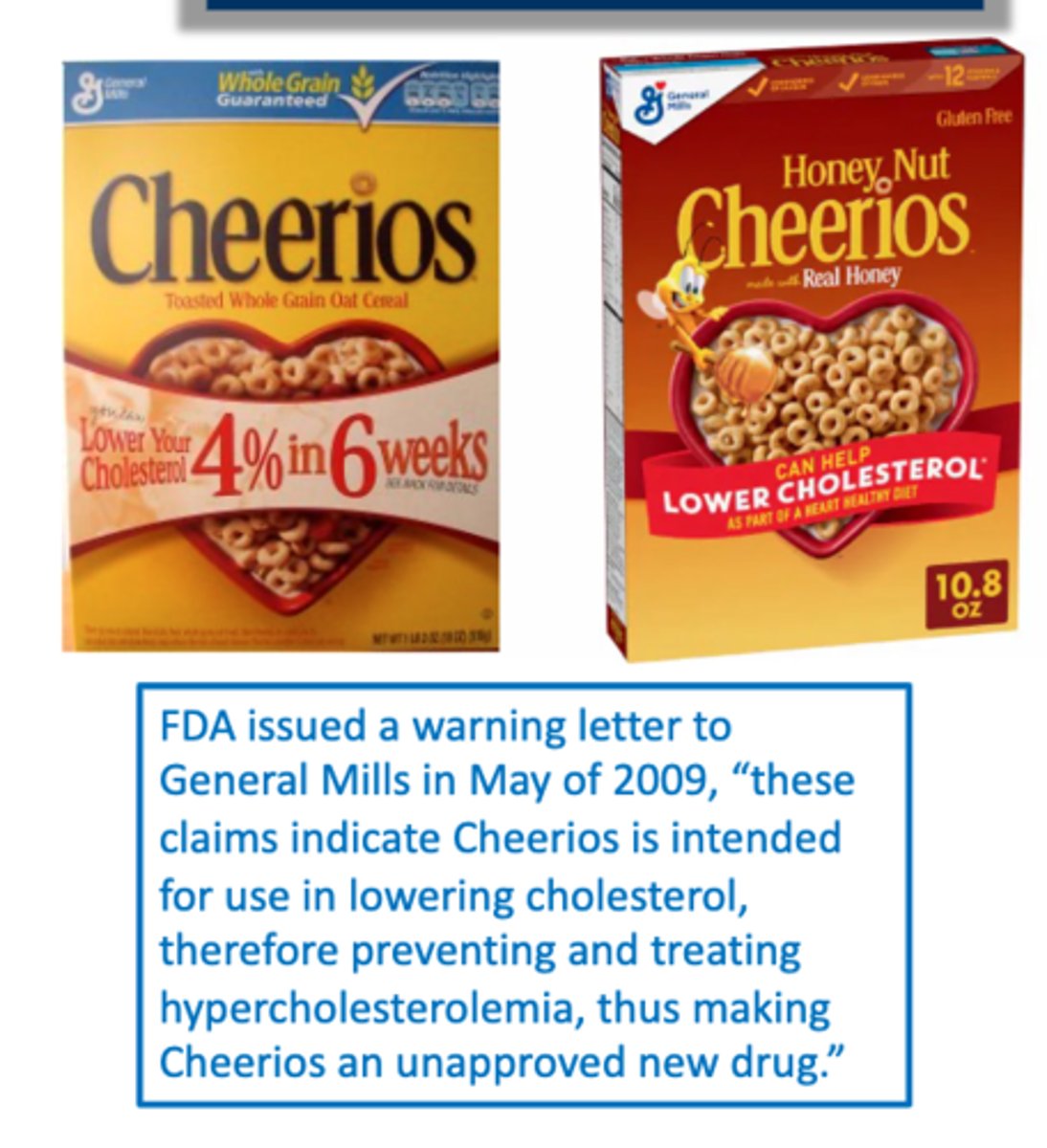
If it meets SSA, the drug is _______ health claims and does not need that disclosure. If it does not meet SSA, it is considered _________ and it needs a disclaimer
unqualified; qualified
Ephedra
• FDA banned all ephedrine alkaloid (ephedra) dietary supplement products in 2004 (NOT OTC products)
• Ephedra is derived from the ma huang plant and used as a natural medicine in China for centuries)
• The FDA review concluded that the Ephedra dietary supplements promoted for weight loss, enhance athletic performance, and increase energy are temporary, modest, and do not improve health.
• FDA found that they increased the risk of serious adverse events including heart attacks, strokes, and death
When can the FDA remove a dietary supplement?
They can be removed on the basis of the product being adulterated, defined as presenting "significant or unreasonable risk of illness or injury under the conditions of use recommended or suggested in the labeling"
Example of claims that cosmetics can make
• Cleanses skin
• Enhances beauty
• Promotes attractiveness
• Alters appearance
Examples of claims cosmetics may NOT make:
• Treats a disease such as acne, eczema or rosacea, • Increases collagen
• Revives cells
Dietary Supplement and Nonprescription Drug Consumer Protection Act 2006
• Requires manufacturers to report serious adverse events
• Manufacturers, packers, or distributors whose name appears on the label MUST submit to the MedWatch Program any report of a serious ADR within 15 business days (or subsequent medical information within 1 year of report)
• Requires a domestic address and continuously operating toll-free telephone number
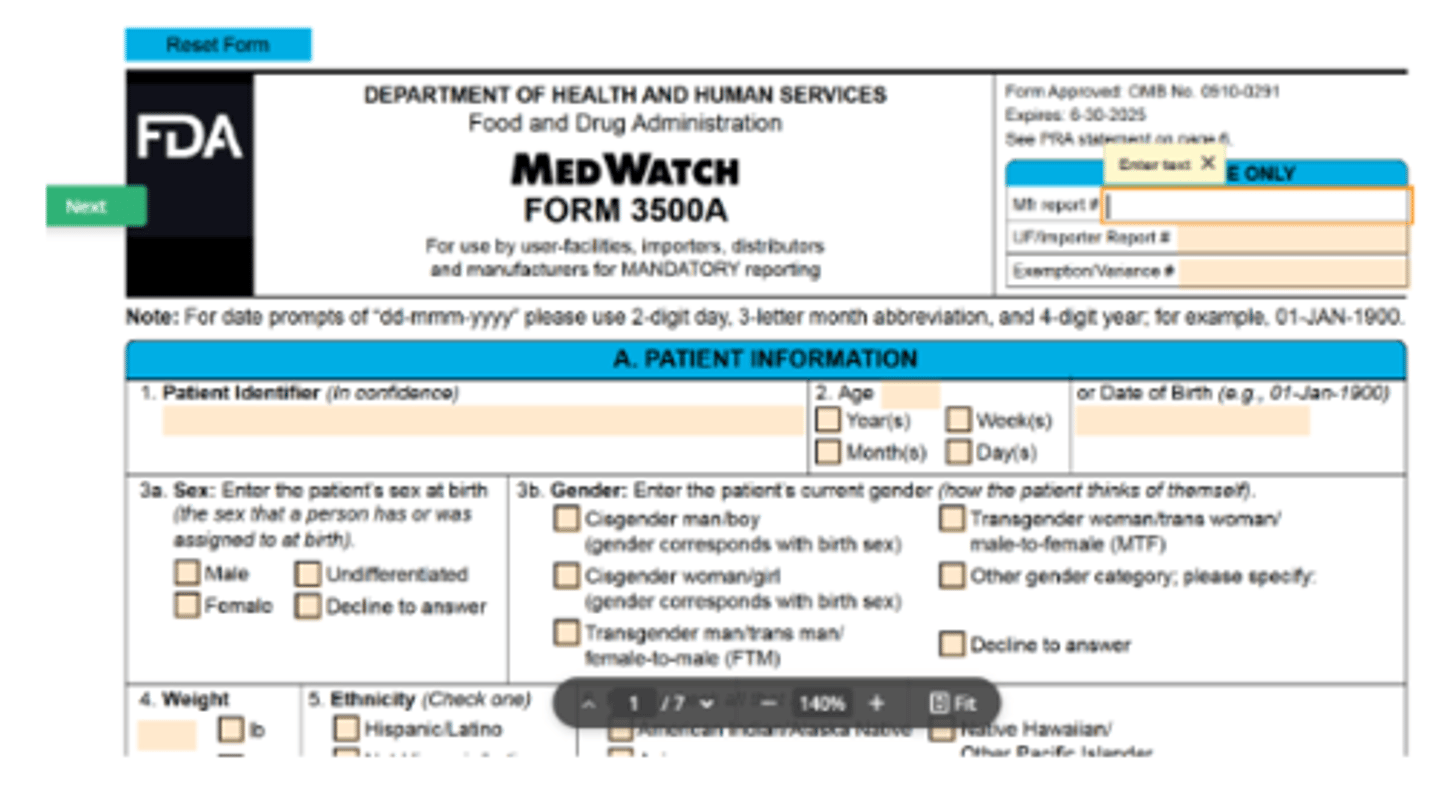
DSHEA Implications for Pharmacists
• Pharmacists have an important role in providing accurate product information and assist patients with product selection (USP/NF)
• Education of patients as opposed to promotion of products with unapproved health or disease claims-Violation of FDCA
• Permits pharmacists to display publications, articles, books, book chapters, or abstracts in conjunction with the sale of dietary supplements (must be reprinted in their entirety, must not be false or misleading, balanced view, physically separate from the actual product)
• Provide accurate information for the patient (risk vs. benefit)
• Tell the patient to speak with their healthcare provider about use of the product
What is antidandruff shampoo considered?
Cosmetic and Drug
Labeling
• All labels and other written, printed, or graphic matter upon any article or any of its containers or wrappers, or accompanying such articles
• It it is deemed NOT to accompany the product, it is ADVERTISING
Label
Means a display of written, printed, or graphic matter upon the immediate container of any article. (201(k); 21 U.S.C.
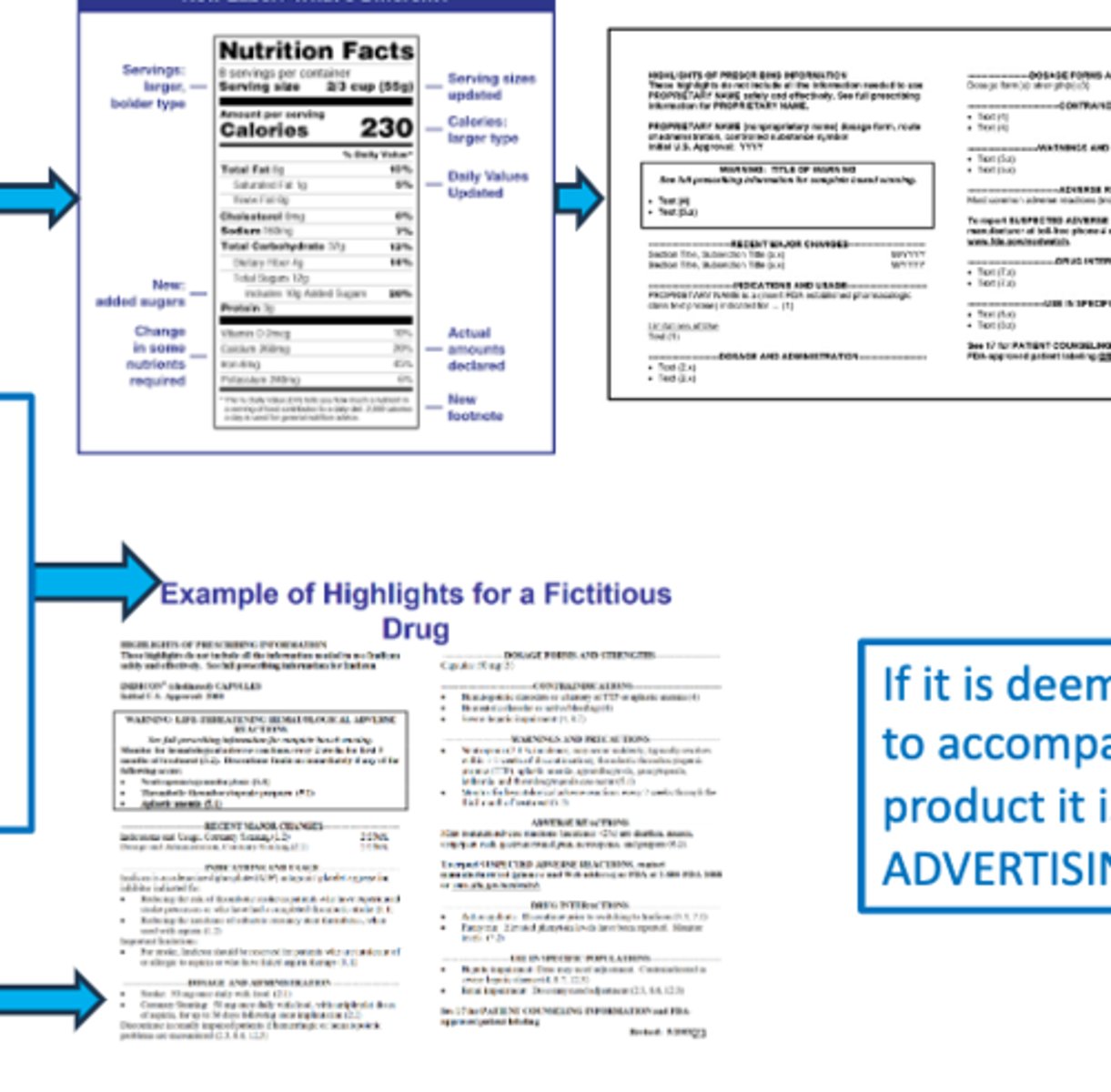
If it is deemed NOT to accompany the product it is ___________________.
ADVERTISING
Prescription Drug Labeling
• Prescription drugs are labeled for the healthcare professional, not the patient. (With the exception of Medication Guide or Patient Instructions)
• Regulations specify information requirements of the commercial label.
• Unit dose labeling is subject to different information requirements.
• New package insert requirements include a “Highlights” section at the beginning, a table of contents, “Full prescribing information”, and a “patient counseling information” section.
Package Insert
• Package insert is a pamphlet that must “accompany” the drug product and contains the essential scientific and medical information needed for safe and effective use of the drug by healthcare professionals.
• It cannot be promotional in nature.
• A patient counseling section was added to facilitate discussion between providers and patients
• Package inserts are found on the NIH resource: DailyMed
Patient Package Inserts
• Required for oral contraceptives and estrogens
• Drugs approved for indications based solely on animal studies
• Known as “Patient information” is patient labeling that can be a part DA-approved prescription of the FDA-approved drug labeling.
• Certain PPIs are developed by the manufacturer and approved by the FDA
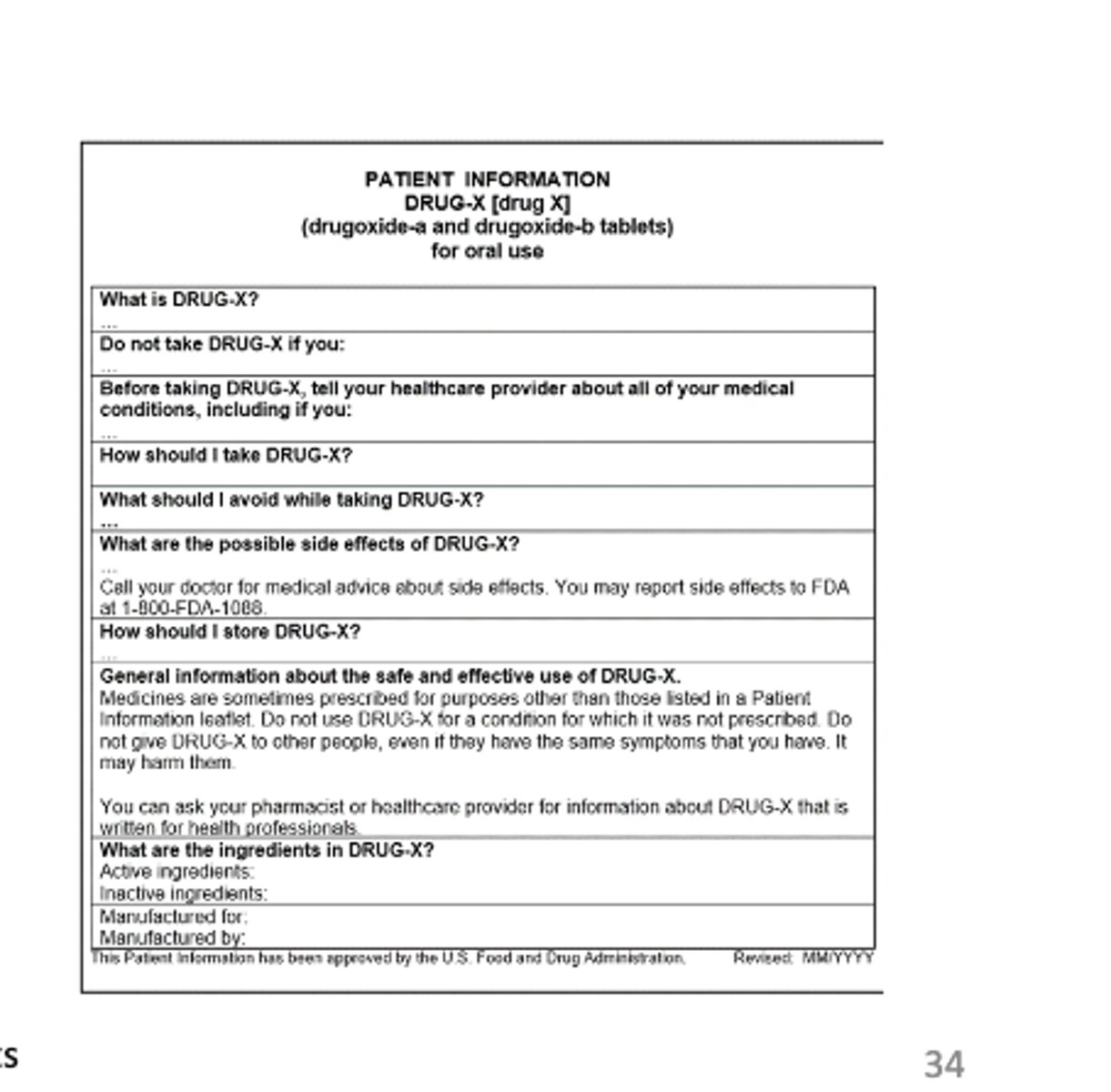
Medication Guides
• Patient labeling could help prevent serious adverse reactions
• REMS Drug has serious risk(s) (relative to benefits) of which patients should be made aware, could affect patient’s decision to use, continue to use the product
• Patient adherence to directions for use is crucial for the drugs effectiveness
**Patient labeling that is part of the FDA-approved prescription drug labeling for certain prescription drug**
T/F: Labeling is NOT permitted to include instructions for use or medication guideline
FALSE

Which types of labeling is for the patient and not the provider?
The Medication Guide or Patient Instructions (PPIs?)
T/F: If a drug is recognized in the USP or HPUS, the drug product must meet all standards of the compendia
TRUE, otherwise, it is considered misbranded or adulterated
Official Compendia USP-NF and Homeopathic USP
• USP Convention is a private organization independent of the FDA, created by physicians and pharmacists in 1820, who were concerned about the potency, quality, and composition of various medicinal agents and ingredients
• The FDA actively participates in the development and modification of the standards contained in the USP monographs
• Monographs contain the approved titles, definitions, descriptions, and standards for identity, quality, strength, purity, packaging, stability, and labeling for a drug.
FDA methods of enforcement
• Injunction (a court order requiring a person to do or cease doing a specific action)
• Criminal proceedings such as fines, imprisonment or both
• Seizure of adulterated or misbranded products
• Warning letters for MINOR VIOLATIONS
What does strict liability mean?
It doesn't matter what you intended or understood, the FDCA is will prosecute you for a violation
When is the "good faith" excuse applicable?
If you provide the FDA with information about sources of supply in a timely manner
Can the FDA recall drugs?
No, it can only recall medical devices, biological products and foods. But they can send a recall request to a manufacturer and the FDA has the authority to take seizure or injunctive action
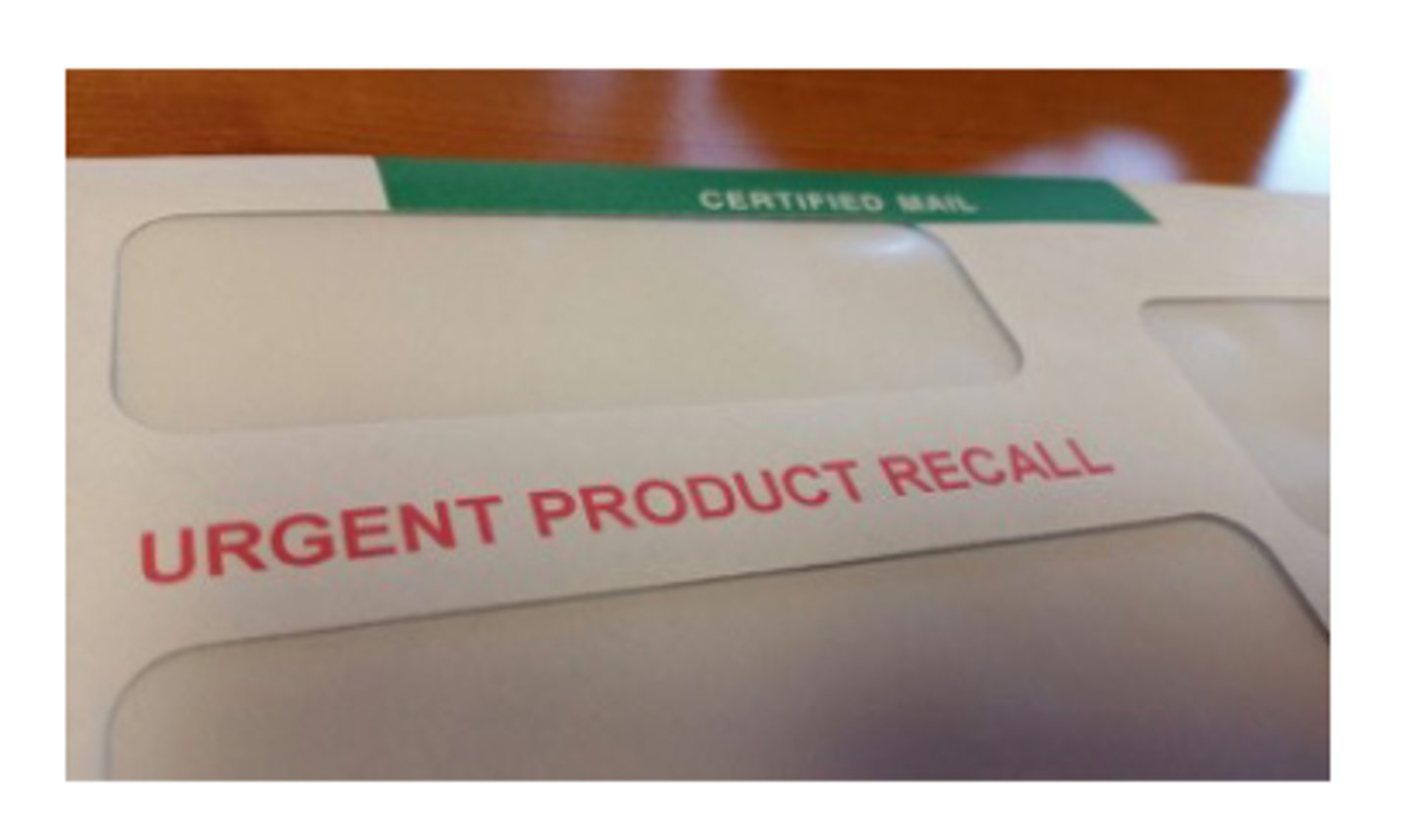
Class I Recall
Dangerous or defective products that predictably could cause serious health problems or death
Class II recalls
A product that might cause temporary health problems or pose slight threat of a serious nature
Class III recalls
Product is unlikely to cause any adverse health reaction, but violates FDA labeling or manufacturing laws.
Most effective way to protect the public from a potentially harmful product
Issuing a drug recall
FDA's role in a recall
1. Oversee a company's strategy
2. Assess the adequacy of the recall
3. Classify the recall
4. Alerting the public
What should a patient do if they have a product that is recalled?
• Use the website www.Recalls.gov to look up the details of a recall and what the patient needs to do
• FDA recommends patients talk to their health care professional about the best course of action for their health if they have a medication that has been recalled.
• Sometimes the company will suggest the patient or consumer return the product to the store in which they purchased it.
• Class 1 recall notifications provide instructions with actions for patients. Patients should follow the instructions provided by the recalling company.
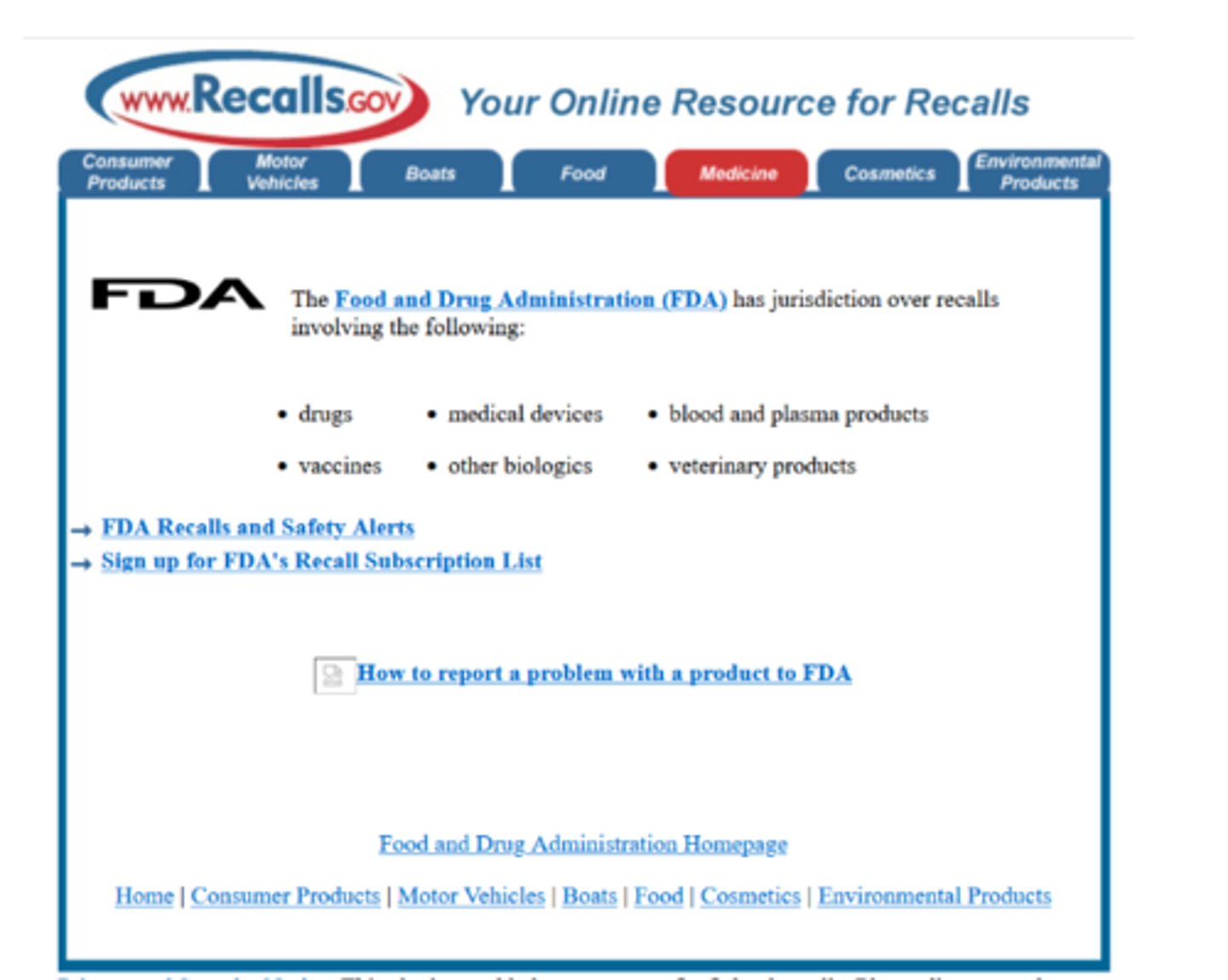
Adulteration
• INSIDE the container and focus on the manufacturer
• A drug is considered adulterated if the basis of the conditions at the facility are improper or do not comply with cGMP (prep, packed, stored, or contaminated like fungus container)
• Containing a color additive that is unsafe that is used for coloring
• A drug is considered adulterated if its strength, quality, or purity differ from the label
• A drug is considered adulterated if its strength, quality, or purity differ from compendia standards, unless clearly stated on the label
Adulteration or Misbranding?
Failure to manufacture a product in a tamper resistant container when required by law
May be both!
Misbranding
• Focuses on representations made by the manufacturer on the label or labeling, including economic info
• Labeling cannot be false or misleading
• Labeling needs to be prominently placed
• Must include adequate directions for use by children and others for whom use might be dangerous
• Adequate warnings against use
• Labeling must include a list of active ingredients, quantity, inactive ingredients in alpha order-Rx/OTC
• Rx drugs must at least have "adequate info for use" (exempt from "adequate directions for use")
• If in a package form unless it bears a label containing; name & place of business of manufacturer, packer, distributor, and an accurate statement of the quantity of the contents in terms of weight, measure, or numerical count
• The drug must not imitate another drug (caffeine tablets that look like Adderall)